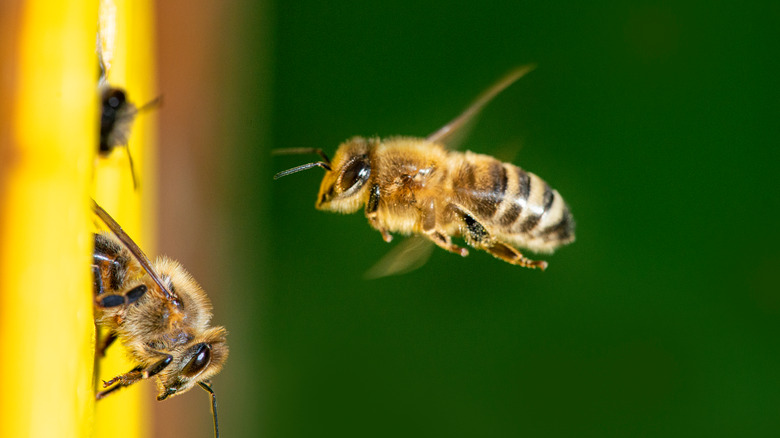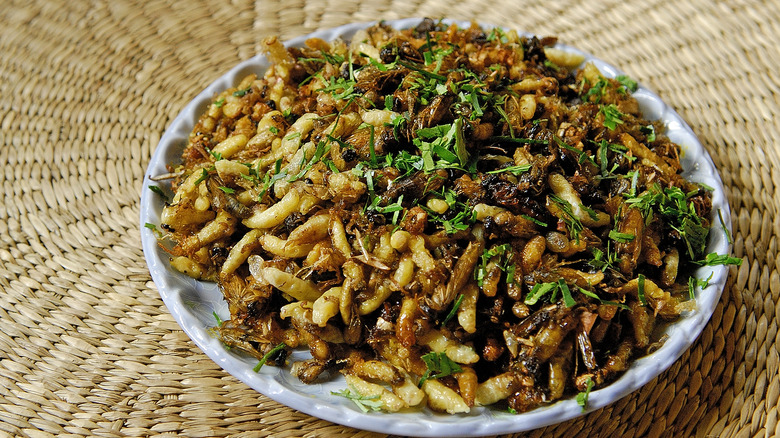What You Need To Know About Yóu Zhá Fēng Yǒng, China's Fried Bee Dish
Chinese food is one of the most popular kinds of food in the U.S. As of 2015, there were more than 45,000 Chinese restaurants in the U.S., a quantity greater than all of the largest fast food chains combined (yes, including McDonald's), according to Time. Popularity aside, American Chinese food is also commonly regarded as essentially different from Chinese food — a category which, itself, includes eight major distinct subsets and many other variations of cuisine, per China Highlights. American Chinese "staples" are increasingly acknowledged as existing outside of the Chinese food tradition — be it crab rangoon (via Thrillist), orange chicken (via NPR), or chop suey (per Spoon University).
One of the most striking differences between American Chinese food and authentic Chinese food is the use of insects. According to China tour company China Highlights, the consumption of insects is common to multiple Chinese culinary traditions. Though the publication notes it's not always common, some dishes include everything from black beetles, to scorpions, to spiders. One particularly popular insect-based dish (which can be found in about a fourth of China's 23 provinces) is called yóu zhá fēng yǒng, which means "fried bee pupae."
A crunchy, healthy delicacy
Bee pupae are most commonly golden fried, but can also be served stir fried, steamed, cold fried (and mixed in sauce), and even baked into crispy cakes. You might be surprised by the taste, too. According to a study published in the Journal of Apicultural Research, honey bee brood (i.e. the larvae and pupae of drones) taste like nuts and have a crunchy consistency (via Science Daily). Reports from the ground differ, with Reddit user JimmyxChanga describing the taste as "a bit like a fried ball of raw dough." Besides palatability, bee pupae also come with great nutritional value, as they are high in protein and low in fat, according to China Highlights.
Still on the fence? Beyond nutritional value and taste, bee larvae are quickly acquiring cachet among highbrow restaurants. For example, the test kitchens of Noma, a two-Michelin star restaurant in Copenhagen, have been known to experiment with bee larvae, as revealed in a 2013 episode of Anthony Bourdain's "Parts Unknown" (via Business Insider).
As with all fine dining, however, you are likely to run into waitlists — bookings at Noma, for example, usually go out three months (via The Modern East). And at that rate, you might as well just book a flight to China.

